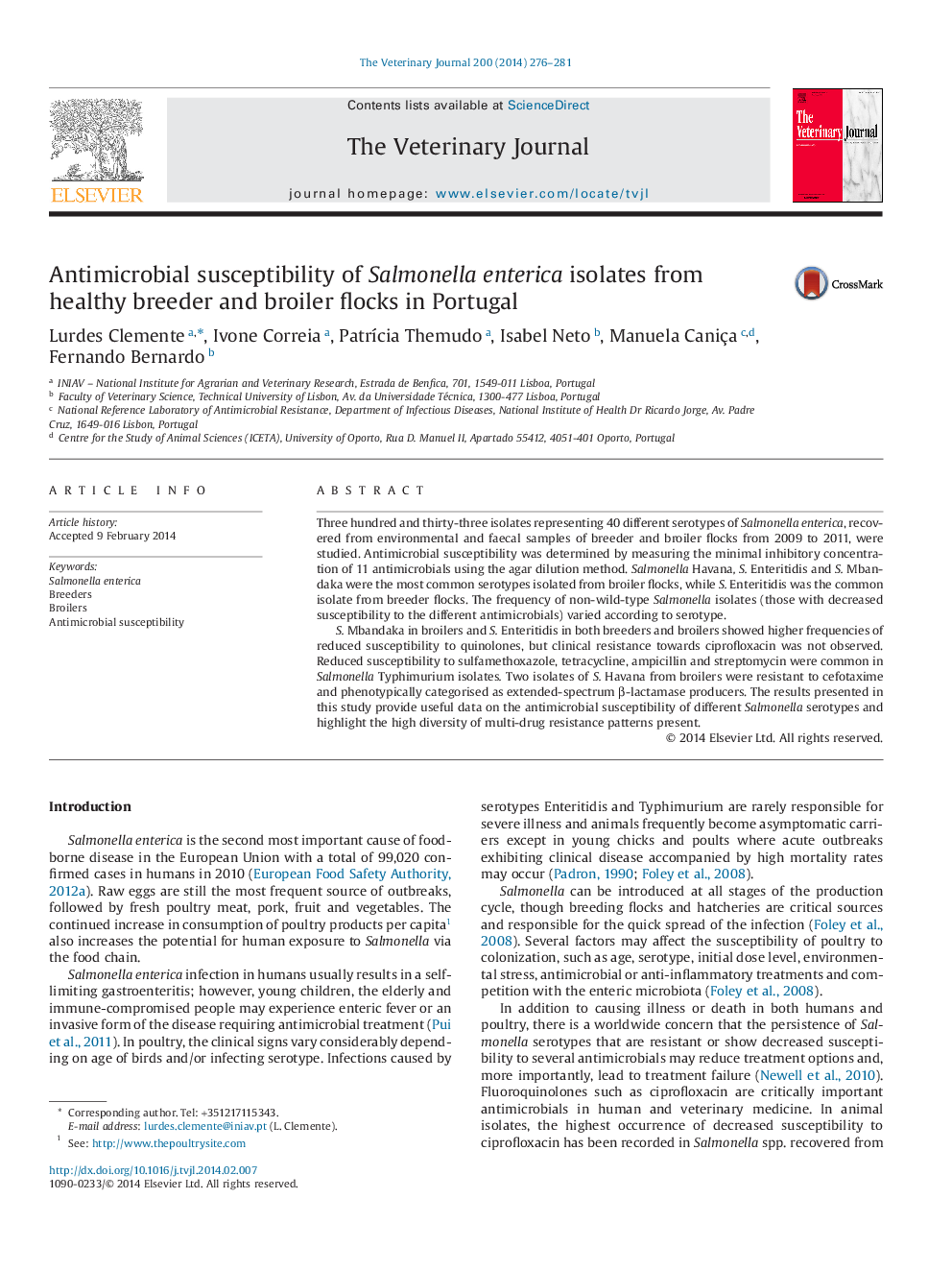| Article ID | Journal | Published Year | Pages | File Type |
|---|---|---|---|---|
| 5798034 | The Veterinary Journal | 2014 | 6 Pages |
Three hundred and thirty-three isolates representing 40 different serotypes of Salmonella enterica, recovered from environmental and faecal samples of breeder and broiler flocks from 2009 to 2011, were studied. Antimicrobial susceptibility was determined by measuring the minimal inhibitory concentration of 11 antimicrobials using the agar dilution method. Salmonella Havana, S. Enteritidis and S. Mbandaka were the most common serotypes isolated from broiler flocks, while S. Enteritidis was the common isolate from breeder flocks. The frequency of non-wild-type Salmonella isolates (those with decreased susceptibility to the different antimicrobials) varied according to serotype.S. Mbandaka in broilers and S. Enteritidis in both breeders and broilers showed higher frequencies of reduced susceptibility to quinolones, but clinical resistance towards ciprofloxacin was not observed. Reduced susceptibility to sulfamethoxazole, tetracycline, ampicillin and streptomycin were common in Salmonella Typhimurium isolates. Two isolates of S. Havana from broilers were resistant to cefotaxime and phenotypically categorised as extended-spectrum β-lactamase producers. The results presented in this study provide useful data on the antimicrobial susceptibility of different Salmonella serotypes and highlight the high diversity of multi-drug resistance patterns present.
